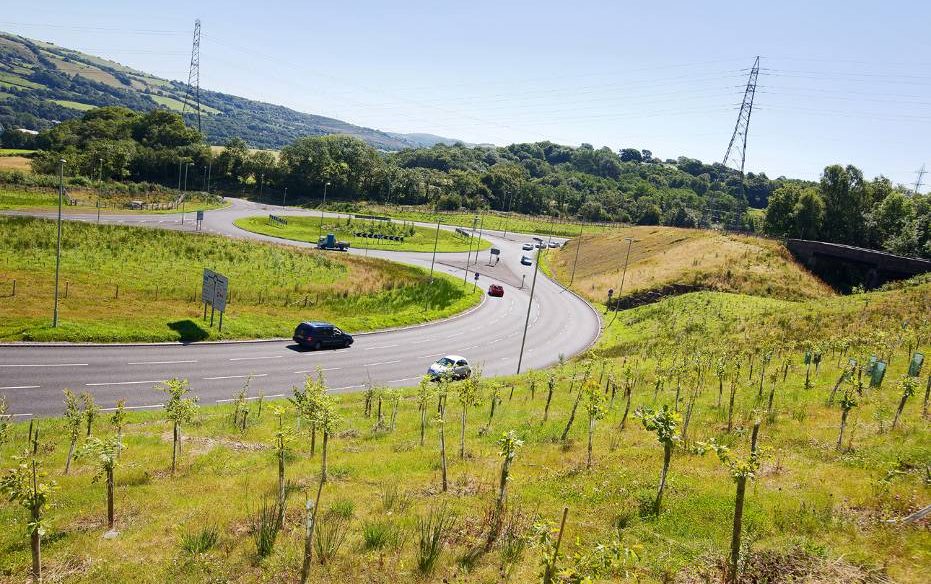
- 300,000 TYRES EXCAVATED AND BALED FOR RE-USE ON SITE
- 100,000 M3 OF ROCK EXCAVATION
- 450,000 M3 OF UNSUITABLE MATERIAL EXCAVATED AND DEALT WITH
- 8KM OF NEW CARRIAGEWAY CONSTRUCTED THROUGH BROWN/GREENFIELD TERRAIN
PROJECT OUTLINE
The Church Village bypass project was designed to ease congestion between Talbot Green and Pontypridd, (South Wales) and increase activity in the local economy. This highway construction project was one of the largest to be undertaken by a local authority in the UK.
To ensure completion on schedule, the project required a collaborative working approach between all appointed contractors, each bringing their own specialisms to the assignment.
Throughout the project Walters was confronted by a number of challenges and considerations related to the existence of landfill sites in the area. One such consideration was the need to excavate and dispose of 300,000 tyres that had been left at site; a task that had to be undertaken with all due consideration to environmental factors.
PROJECT DELIVERY
Walters were selected to partner with Costain Ltd at the tender stage as its preferred earthworks subcontractor for the Church Village bypass ECI scheme. This collaborative approach was considered the ideal method of tackling this significant scheme and called upon both businesses” engineers and operatives to work together to efficiently complete the project on schedule.
Walters were able to overcome a number of issues, including the disposal of the 300,000 tyres that were buried at the site; these were excavated, baled and reused as elements of new gravity retaining walls. In addition, Walters also redesigned the highway alignment to avoid entry into a second municipal landfill and minimised the need for extensive earthworks at the first, resulting in a 30% reduction in the initial cost estimate. Walters was also called upon to overcome the issue of a topsoil shortage. This was engineered at the site using a blend of peat, soft clays and other materials.

